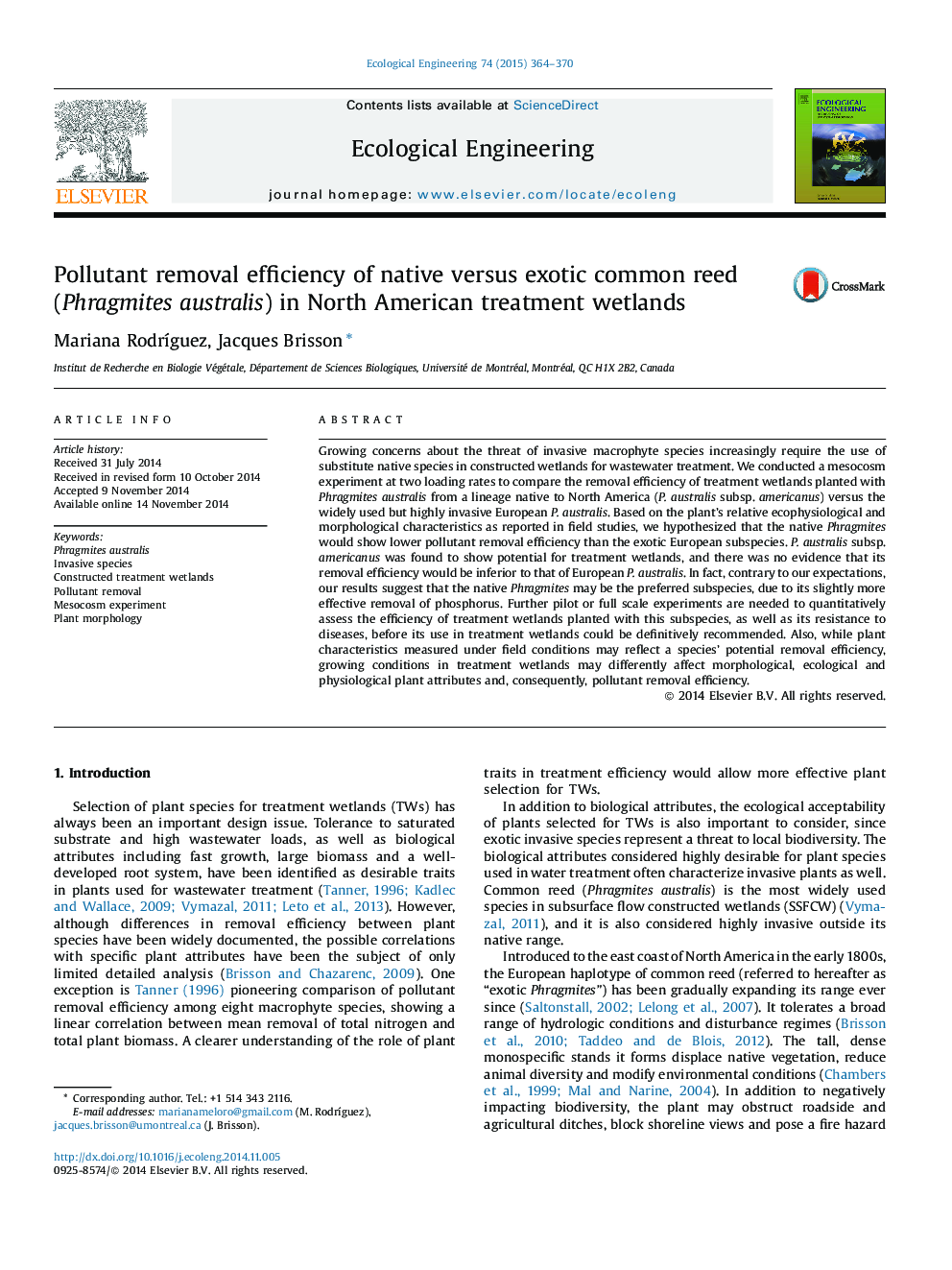| Article ID | Journal | Published Year | Pages | File Type |
|---|---|---|---|---|
| 4389328 | Ecological Engineering | 2015 | 7 Pages |
Abstract
Growing concerns about the threat of invasive macrophyte species increasingly require the use of substitute native species in constructed wetlands for wastewater treatment. We conducted a mesocosm experiment at two loading rates to compare the removal efficiency of treatment wetlands planted with Phragmites australis from a lineage native to North America (P. australis subsp. americanus) versus the widely used but highly invasive European P. australis. Based on the plant's relative ecophysiological and morphological characteristics as reported in field studies, we hypothesized that the native Phragmites would show lower pollutant removal efficiency than the exotic European subspecies. P. australis subsp. americanus was found to show potential for treatment wetlands, and there was no evidence that its removal efficiency would be inferior to that of European P. australis. In fact, contrary to our expectations, our results suggest that the native Phragmites may be the preferred subspecies, due to its slightly more effective removal of phosphorus. Further pilot or full scale experiments are needed to quantitatively assess the efficiency of treatment wetlands planted with this subspecies, as well as its resistance to diseases, before its use in treatment wetlands could be definitively recommended. Also, while plant characteristics measured under field conditions may reflect a species' potential removal efficiency, growing conditions in treatment wetlands may differently affect morphological, ecological and physiological plant attributes and, consequently, pollutant removal efficiency.
Keywords
Related Topics
Life Sciences
Agricultural and Biological Sciences
Ecology, Evolution, Behavior and Systematics
Authors
Mariana RodrÃguez, Jacques Brisson,
